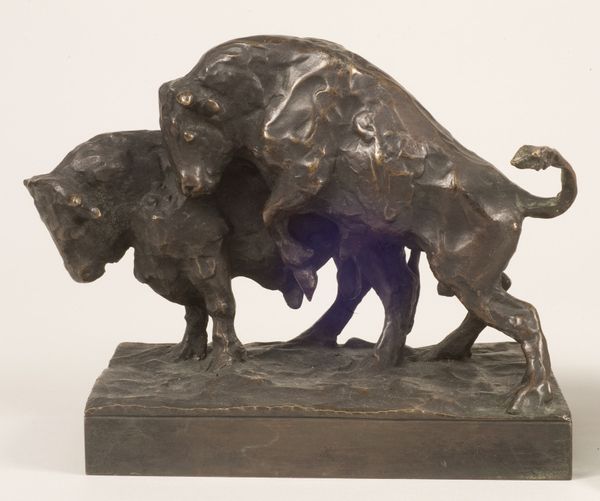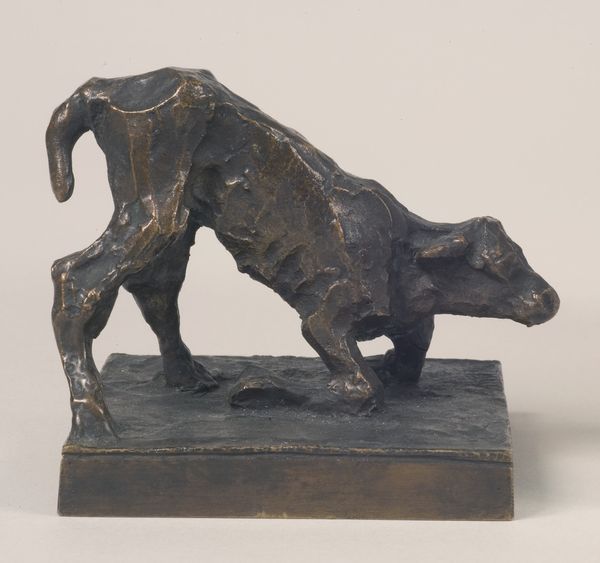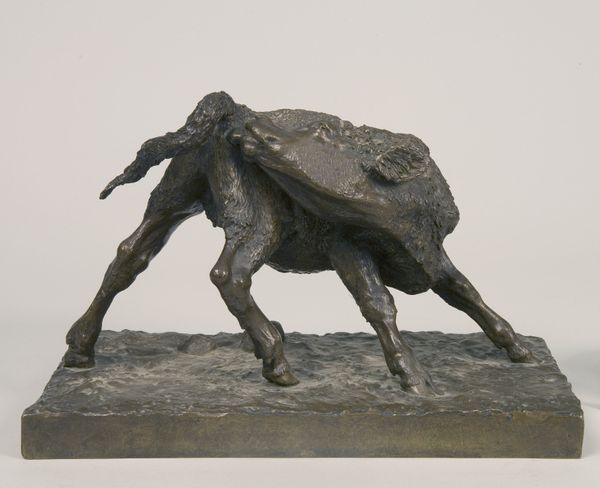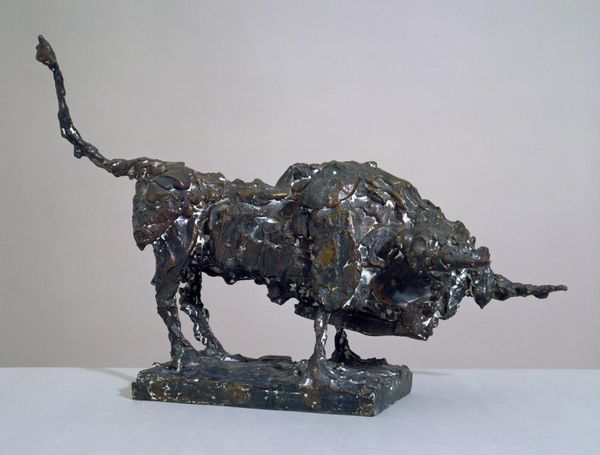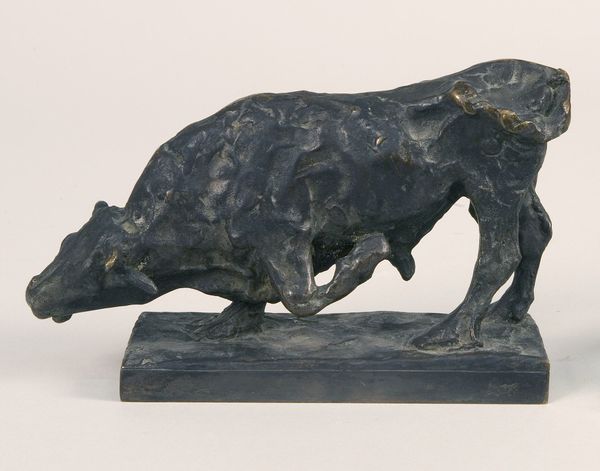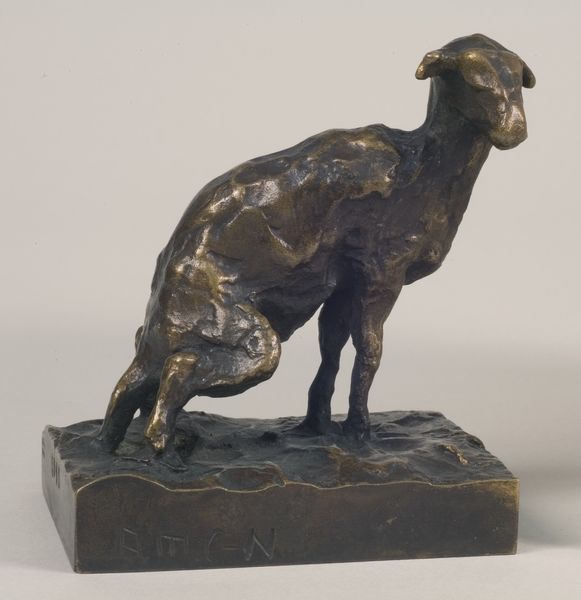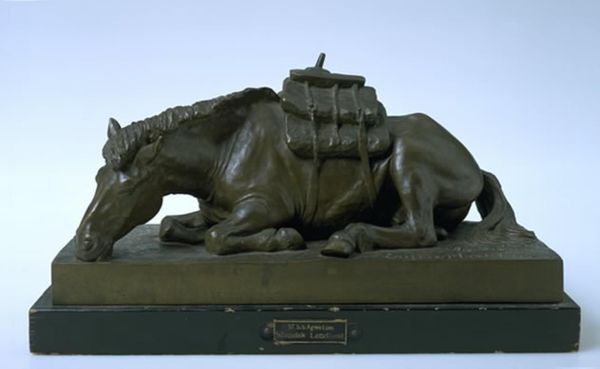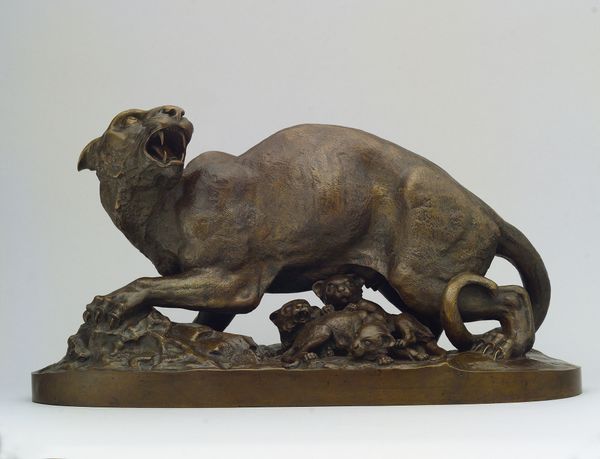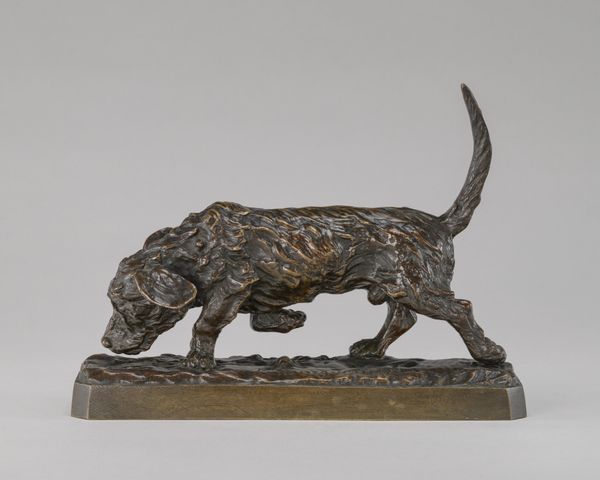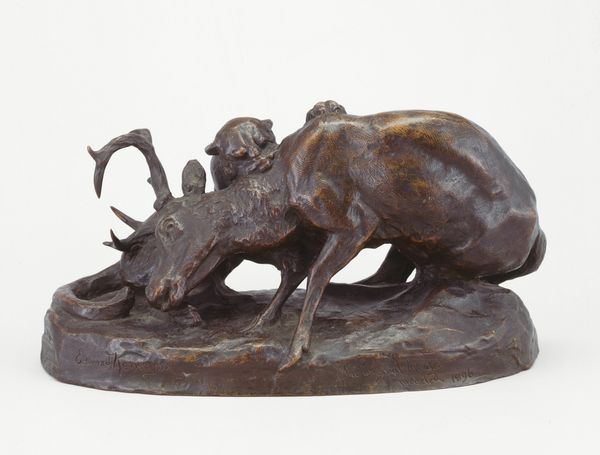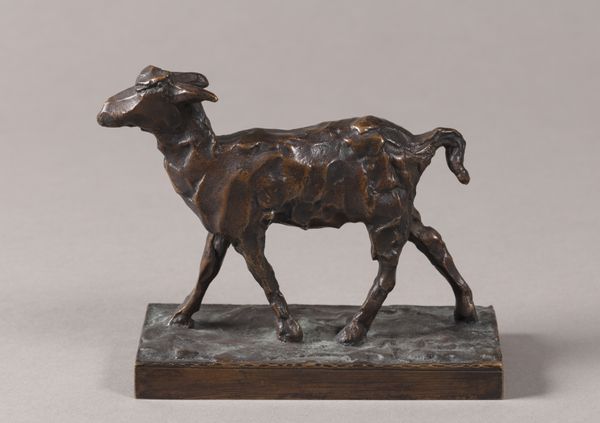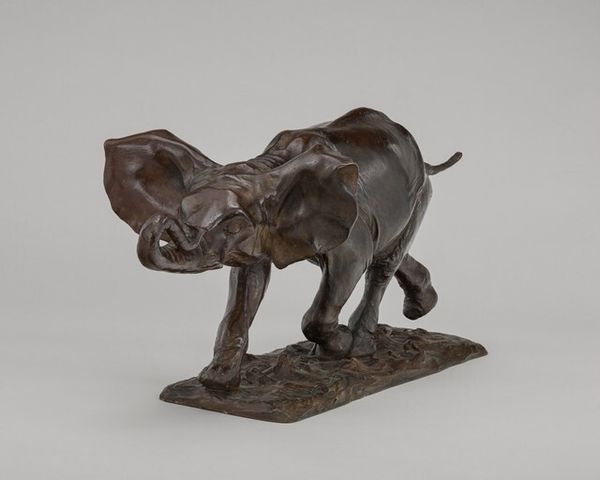
bronze
#
natural shape and form
#
structure
#
stone
#
sculpture
#
bronze
#
sculptural image
#
male figure
#
unrealistic statue
#
sculpting
#
ruin
#
statue
Dimensions: 18 cm (height) x 29 cm (width) x 16.2 cm (depth) (Netto)
Editor: This is Anne Marie Carl Nielsen’s bronze sculpture, "A Calf Scratching Itself Behind Its Ear," created in 1887, currently at the SMK. It’s smaller than I imagined, and the bronze gives it such a grounded, earthy feel. What draws your attention most when you look at it? Curator: Immediately, I think of the casting process. The calf, initially modeled in clay or wax, would have undergone a transformation through intense heat and human labor. Consider the foundries of the late 19th century: spaces of intense physical effort, where societal divisions between the artist’s vision and the workers’ execution were stark. Editor: So, it’s not just about Nielsen’s artistic intention, but about the whole network involved in bringing the sculpture into being? Curator: Precisely. The sculpture embodies that network. Bronze, as a material, carries a history of mining, trade, and the specific techniques of alloying copper and tin. These processes – the labor – shaped not only the final form, but also the economic and social conditions surrounding its creation. Editor: That shifts my perspective completely. I was initially focused on the animal itself, its pose. Curator: And the pose is important. Does this action -- the calf scratching -- strike you as being ennobling, grand, in a way similar to how humans would be represented in similar sculptures? Editor: No, definitely not. It seems to capture a fleeting moment of everyday animal existence. There’s almost an irony to elevating something so commonplace with bronze. Curator: It’s this tension – between the inherent value associated with bronze and the seemingly mundane subject matter – that makes it interesting. This sculpture challenges us to reconsider the boundaries between "high art" and the everyday lives and material conditions of animals, and humans too. I wonder, in a time of great debates about agricultural practice, if it wasn't some subtle commentary on what labor *should* be. Editor: I hadn't thought of it that way, as a statement on labor itself, almost like a social document. This makes me want to know more about the foundries Nielsen would have worked with and their place in the social landscape. Curator: Exactly! Now you're looking at the matrix of factors informing its genesis. It also offers another perspective of what is "worthy" to be rendered immortal in such costly material.
Comments
No comments
Be the first to comment and join the conversation on the ultimate creative platform.
